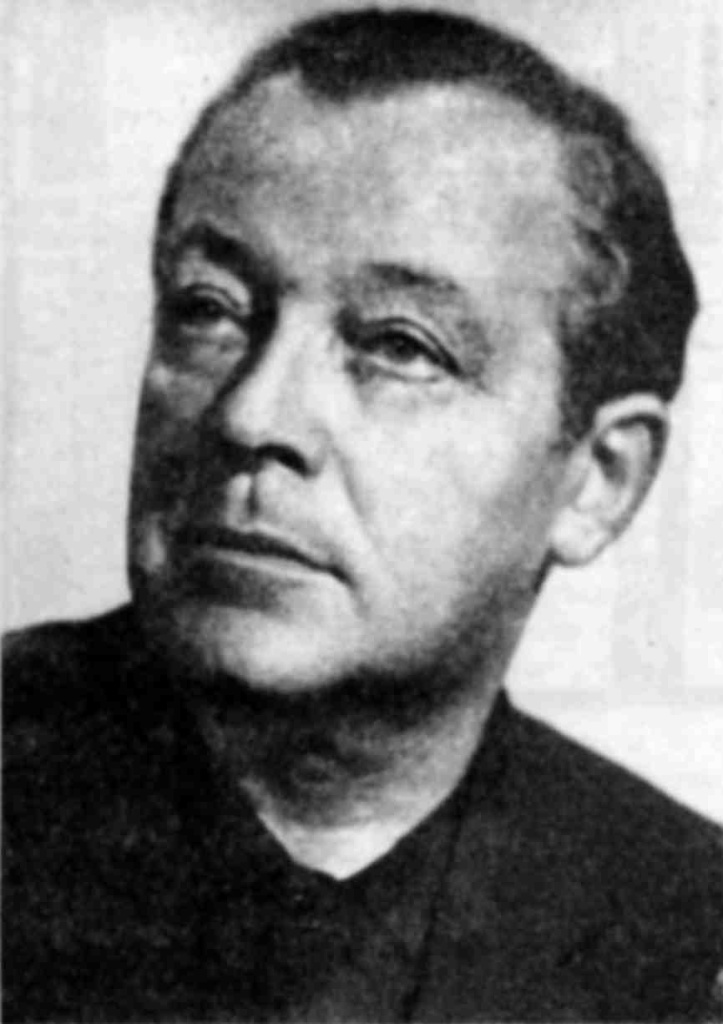 David Goldgor
David Goldgor A graduate of the Leningrad Institute of Municipal Construction Engineers (LIICS), a teacher at the Leningrad Civil Engineering Institute (both now SPbGASU), Soviet architect, graphic artist David Semenovich Goldgor (1912–1982) wrote his name into the history of the city on the Neva for centuries: many of the objects he took part in designing apparel Petersburg to this day. But the Nevsky Cranes Memorial, dedicated to the memory of those who died during the Great Patriotic War, other monuments to heroes, and the Victory Arch took a special place in his professional biography, for him, a front-line soldier, since the architect personally experienced all the hardships of the harsh military years.
In 1934, David Goldgor graduated from LIICS. The young architect began his career in Studio No. 5 of the Lenproekt Institute. He worked under the supervision of Evgeny Levinson and Igor Fomin, already well-known architects at that time. The first taught at our university, and a few years later became a corresponding member of the USSR Academy of Architecture, a DSc in Architecture, and a Professor. The second would soon head the Department of Architectural Design at LIICS, and in 1951 he would take the position of deputy chief architect of Leningrad. They would assemble a strong team of young Leningrad architects, among whom David Goldgor would become one of the most talented. He would immediately be involved in working on building projects for the Institute of Experimental Medicine. In those years, the architect would also prove himself as a graphic artist.
When the war began, David Goldgor volunteered for the people's militia and was sent to the first rifle regiment of the 2nd division as a sapper. He took part in combat operations in the Gatchina region. After the blockade was lifted, he worked on the restoration of Leningrad, and in peacetime he returned to his native workshop. Already in 1945, together with the architect Igor Fomin, he drew up a project for a temporary triumphal arch in Leningrad on Obukhovskoy Oborony Avenue near Spartak Garden, intended to welcome the victors.
In 1953, he became the head of the workshop together with Evgeny Levinson, after whose death in 1968 he took full responsibility for its work.
David Goldgor always remained true to his work and created projects for residential buildings, public buildings, and memorials. Under his leadership, the area around Smolny was formed, and Kupchino was developed. In collaboration with other architects, he designed the Moscow Hotel and the automatic telephone exchange, which formed the space of Alexander Nevsky Square. Among the widely known objects is the ground pavilion of the Narvskaya metro station, opened in 1955.
In the 1960s and 1970s, David Goldgor combined his active professional work with teaching at the Department of Architectural Planning at LISI.
Awarded the Medal "For the Defense of Leningrad".
Other materials of the "Scientific Regiment" project
Our Graduate Built the Road of Life
Front Line of the Architect Aleksandr Nikolsky
Researcher who Developed Science in Besieged Leningrad
Fights of Student Klinov
Engineer of the 3rd Belorussian Front
Nineteen-Year-Old Gunner Stormed Berlin
Path of a Volunteer: from Front-Line Roads to Space Development
Ivan Solomakhin: "The Most Memorable Battle was for this Devil's Hill!"
Fiery Dnieper of the Hero of the Soviet Union Aleksandr Prygunov
Approaching to the Victory
Fedor Komal's Front: from the War Start to the Victory
Junior Political Instructor Boris Gubanov: “Shells Were Whizzing, and the Ground Took off Nearby”
Viktor Kvyatkovsky, Radio Reconnaissance Operator of the Baltic Fleet
How the Chief Architect Nikolai Baranov Kept Leningrad "Hidden" from the Enemy
Architect Nikolai Khomutetsky: Four Years at the Forefront
Semyon Shifrin Thwarted Nazi Plans to Leave Leningrad Waterless
LISI in the Post-War Years
LISI Graduate Mikhail Zherbin, Design Engineer and Composer
Abdulla Mangushev: Four Years at the Front and the Whole Life in Science
Architects Zazerskys Built and Defended the City on the Neva River
Worked His Way Up From a Lieutenant Technician to the Galaxy of Mathematicians
Konstantin Sakhnovsky: From Cadet Of the Russian Empire to Academician of the USSR
Military Architect Of The Front Line Defense And Engineering Intelligence
World-famous scientist, outstanding engineer and national champion
An Outstanding Urban Planner Who Lived And Worked In Besieged Leningrad
Projects by Architect Sergey Evdokimov: from Defensive Structures and City Restoration to Metro Stations
Volunteer Mikhail Laletin: “After the front – to the university, and then, perhaps, to become an officer”
Architect Aleksandr Sokolov preserved and restored cultural heritage